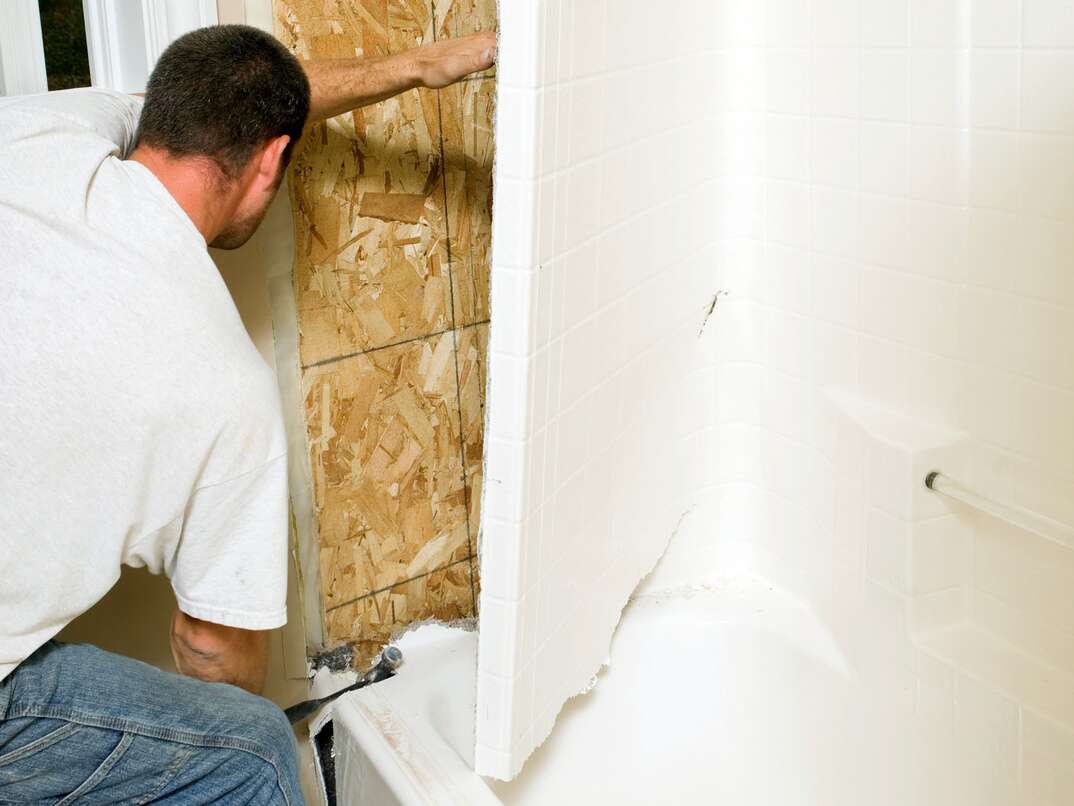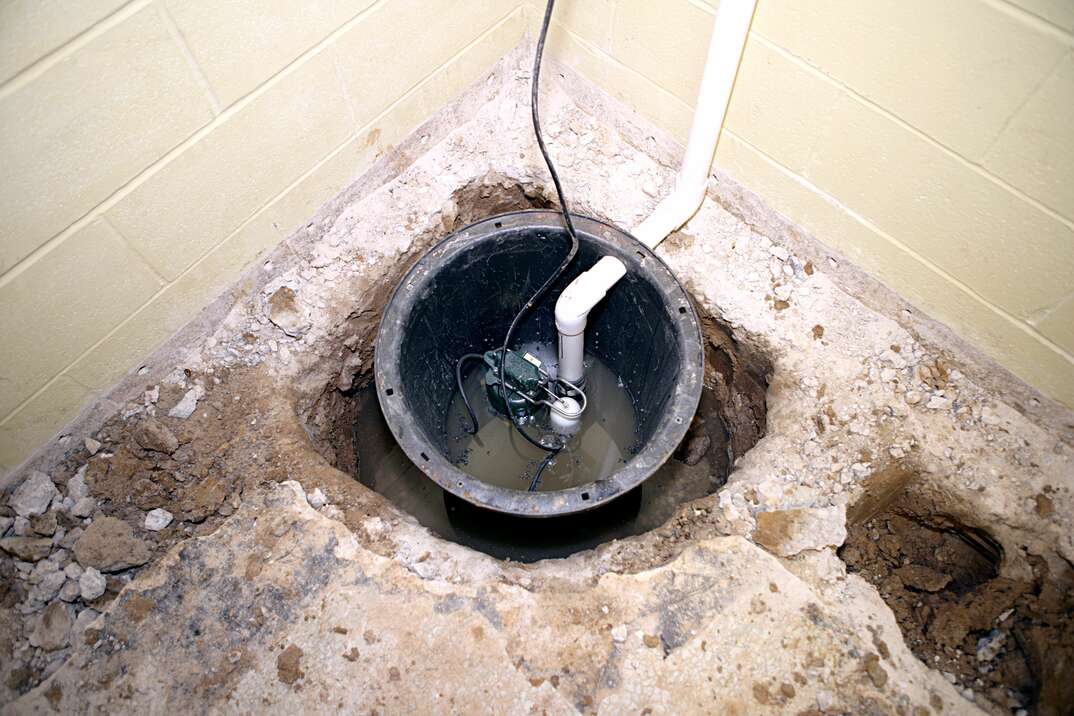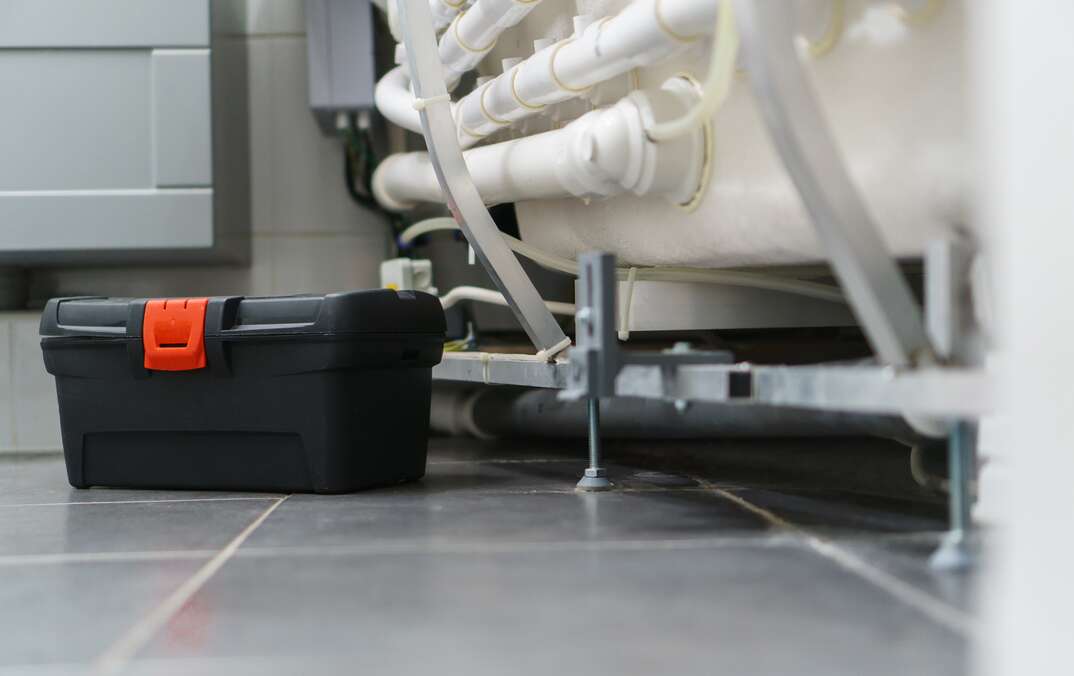How to Remove a Bathtub in 4 Simple Steps

Removing a Bathtub at a Glance
- Tools: Utility knife, screwdriver, tub drain wrench, pliers
- Step 1: Turn off water
- Step 2: Disconnect drain
- Step 3: Remove screws
- Step 4: Lift tub out and discard
Replacing your bathtub or installing a shower unit in its place is a great way to modernize your bathroom — but figuring out how to get the old tub out may feel like a daunting task.
This May Also Interest You: How to Install or Replace a Bathtub
With the right tools and a bit of know-how, removing a bathtub is a manageable job for most homeowners. Follow this four-step guide for easy removal.
Removing a Bathtub: Step-by-Step Instructions
Before you start removing your bathtub, make sure that you wear eye protection and thick protective gloves. You'll also need a utility knife, screwdriver, tub drain wrench and set of pliers. Don't forget to measure your bathtub before you remove it and check which side the drainpipe is on so that you can order the correct replacement.
1. Shut Off the Water Supply
Ensure that water stops flowing to the fixture by turning off the shutoff valve to your bathroom. If you don't have a separate valve to the bathroom, shut off the supply to your entire home at the stopcock.
2. Disconnect the Tub Drain
Before you disconnect the tub drain, you'll first need to remove the drain flange. Some models require you to unscrew a drain stopper to gain access. Once you've located the flange, you can take it out with a tub drain wrench.
Next, unscrew and remove the overflow cover and tub spout. Either unscrew the spout's set screw or turn it counterclockwise if you have a screw-free model.
Finally, remove the access panel to give yourself access to the area below the bathtub. If your tub doesn't have an access panel, you'll need to carefully remove a small section of drywall. Use pliers to disconnect the drain assembly, using lubricant if you have stiff steel connections. This should let you remove the entire assembly. Many people opt to replace the assembly at the same time as the bathtub.
3. Remove the Screws Holding the Tub to the Wall
Start by removing a few inches of the drywall, tiles or other surround material above the edge of your tub. You can make it much easier to repair by removing the same amount around the entire perimeter. Once you've accessed the flange surrounding the tub, use a screwdriver or pry bar to free it. Avoid using power tools for this task; they’ll create a lot of dust that could irritate your eyes and airways.
4. Remove the Tub
It's safest to get a friend to help you remove the tub, especially if you're removing a heavy cast iron bathtub or a porcelain model. While one of you lifts one end, the other should slide boards underneath to protect the floor and make it easier to move. You can then slide the tub along the boards to remove it from your bathroom.
Finally, clean the exposed space thoroughly. Remove any loose materials and nails, and vacuum up the dust. You're now ready to install your replacement bathtub or shower unit.
More Related Articles
- How Much Does It Cost to Replace or Install a Bathtub
- How Much Does It Cost to Install an Air Tub?
- How to Install a Whirlpool Bathtub
- How Much Does It Cost to Install a Whirlpool Bathtub?
- How to Remove a Bathtub Stopper
Is It Difficult to Remove a Bathtub?
Removing a bathtub is relatively straightforward, and you should be able to complete the job within a single day. However, you'll need a basic toolkit, protective clothing and another person to help you remove the fixture.
The most complex stage of removing an old bathtub is cutting away the drywall, tiles or tub surround. It's understandable to worry about damaging your bathroom if you're inexperienced. If you're not confident, call a professional plumber to do the work for you.
How Do I Get Rid of an Old Bathtub?
This depends on the type of tub you have. If you're removing a cast iron bathtub, you'll need to split it into smaller sections first using a sledgehammer, as it will be too heavy to remove in one piece. This process can be dangerous, so exercise caution and make sure you wear eye and ear protection.
All other types of bathtubs are light enough for two people to carry out without cutting them up. You can use a saw to chop a steel or fiberglass bathtub into more manageable sections if you prefer. Note that you shouldn't attempt to cut up an enameled bath.
Once you've taken the tub out of your bathroom, you can take it to a nearby recycling center or arrange a collection if your local facilities offer this service.
Should I Remove My Bathtub?
Other than the effort and cost, there are few downsides to ripping out and replacing your bathtub with a modern model. Doing so can dramatically update your bathroom's appearance and may increase your home's resale value. However, if you want a less drastic update, even replacing the tub's faucets can give a tired bathroom a facelift.
However, if you're considering replacing your bathtub with a stand-alone shower unit, the decision is a bit more complicated. Here are the main pros and cons to consider when deciding whether to remove a bathtub and replace it with a shower:
Pros
- Cheaper to replace: When comparing a bathtub and shower unit of similar quality, the shower unit will almost always cost less. Therefore, it's a smart move if you're updating your bathroom on a budget.
- Reduced water costs: Showers use significantly less water than baths, which could make a significant difference to your water bills over time. However, you may prefer to get the best of both worlds by installing a shower over your bathtub.
- More spacious layout: If your bathroom layout has been causing you problems, replacing your bathtub with a compact shower can increase the available floor space and make it feel roomier.
Cons
- Layout implications: Depending on your bathroom's current layout and which shower unit you want, you may need to completely rejig things to create a workable floor plan. This can add to the cost and inconvenience of replacing your bathtub.
- Decreased home value: If you only have one bathroom in your home, removing the bath and replacing it with a shower could reduce your home’s value. You may also find that fewer buyers are willing to consider purchasing a home without a bathtub, especially if they have a young family. However, it shouldn't negatively impact if you replace your tub with a shower in the second bathroom and retain a bathtub in the master.


